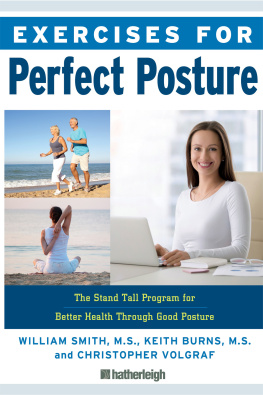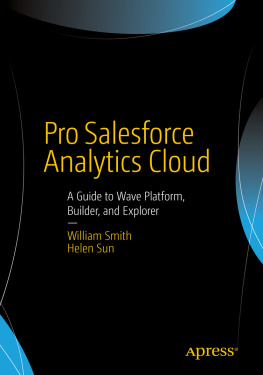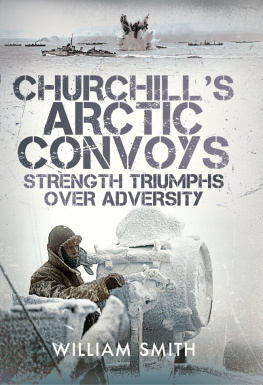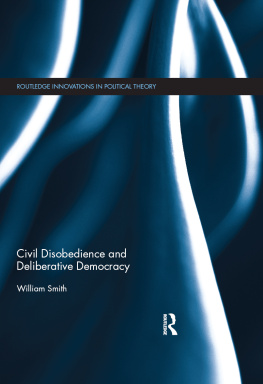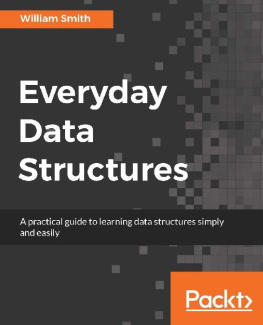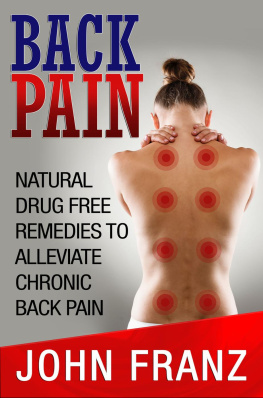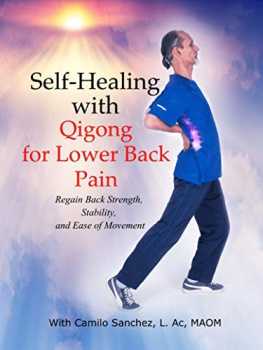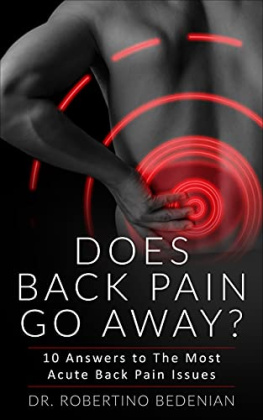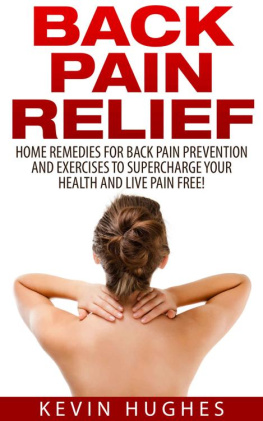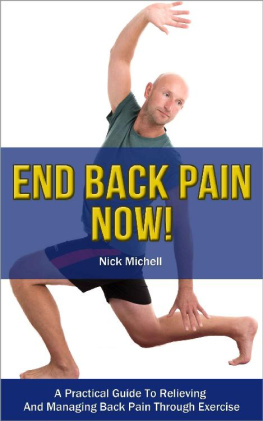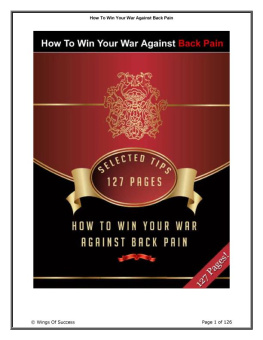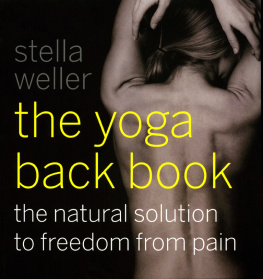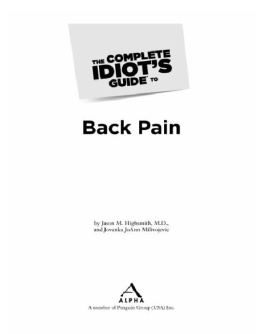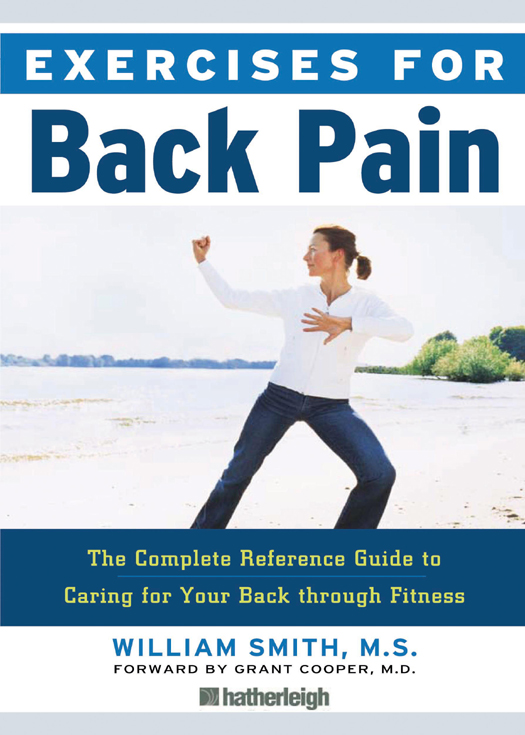EXERCISES FOR BACK PAIN
Text copyright 2009 Hatherleigh Press, Ltd.
All rights reserved. No part of this book may be reproduced, stored in a retrieval system, or transmitted, in any form or by any means, electronic or otherwise, without written permission from the Publisher.
Hatherleigh Press is committed to preserving and protecting the natural resources of the Earth. Environmentally responsible and sustainable practices are embraced within the companys mission statement.
Hatherleigh Press is a member of the Publishers Earth Alliance, committed to preserving and protecting the natural resources of the planet while developing a sustainable business model for the book publishing industry.
www.hatherleighpress.com
This book was edited, designed, and photographed in the village of Hobart, New York. Hobart is a community that has embraced books and publishing as a component of its livelihood. There are several unique bookstores in the village. For more information, please visit www.hobartbookvillage.com.
Library of Congress Cataloging-in-Publication Data
Smith, William, 1976
Exercises for back pain / William Smith; foreword by Grant Cooper.
p. cm.
eISBN: 978-1-57826-391-2 1. Backache--Exercise therapy. I. Title.
RD771.B217S625 2009
617.564062--dc22
2009018303
Cover Design by Heather Daugherty
Photography by Catarina Astrom
v3.1
DISCLAIMER
Consult your physician before beginning any exercise program. The author and publisher of this book and workout disclaim any liability, personal or professional, resulting from the misapplication of any of the training procedures described in this publication.
DEDICATION
I have been influenced by countless fitness industry and non-industry professionals. There are too many to mention here, but to each I offer my thank you for the influence your professionalism has cast upon me.
Gray Cook
Stuart McGill
Shirley Sharmar
Vladimir Janda
Charlie Weingroff
Sue Hitzmann
Grant Cooper
John Sarno
Robin McKenzie
Kapandji
Robert Schleipf
Gil Hedley, Ph.D
Janet Travell
Dr. Michael Jones
Lester Z. Lieberman
Dr. Fred Aueron
Tom Meyers
Paul Frediani
To the memory of Dr. Vladimir Jandaa pioneer and inspiration in the fields of movement science and rehabilitation.
Table of Contents
Chapter 1 Oh My Aching Back!
About the Causes of Your Back Pain
Chapter 2 Breakthroughs in Back Pain:
What the New Studies Say
Chapter 3 The Keys to Long-Term Back Health:
Maintaining a Strong and
Healthy Back for Years to Come
Chapter 4 The Path to Better Health:
The Benefits of Exercise
Chapter 5 Rules of the Road:
Exercise Precautions
FOREWORD
As a musculoskeletal medicine specialist, I treat everyone from the couch potato to the weekend warrior to the professional athlete. Some of my favorite patients are the sixty-, seventy-, eighty-, and, yes, ninety-year-olds, who are frustrated with lower back pain because it is interfering with their golf or tennis. These days, people in their eighth and ninth decades dont just hope to be active, they expect it. As a physician, it is my privilege to help them achieve this obtainable goal. More and more, the importance of the bridge between what I do, what the physical therapist does, and what the athletic trainer and coach do is becoming apparent. Our roles as healthcare providers and motivators form parts of a greater whole, all designed to keep our patients and/or clients active and pain-free.
Back pain is one of the most common forms of disability. In its most mild form it can be annoying. At its worst, back pain can be incapacitating. Keeping ones back strong and healthy before an injury, or strengthening it after an injury, is the best way to help prevent future problems. I often tell my patients that the human spine is in many ways similar to a mast on a ship. A mast on a ship requires riggings that attach to it. Without those riggings, the mast would fall because it cannot support its own weight. The human spine can support about 35 pounds of pressure. Chances are that you, like the rest of us, weigh more than 35 pounds. Your spine, therefore, requires all the surrounding muscles and tendons to which it attaches to support it and keep it upright. Without those muscles and tendons, your spine would fall over and snap. When those muscles are tight, weak, or imbalanced, they create unnatural stresses on the muscles themselves as well as on the underlying structures, such as the discs and facet joints, which can lead to back pain.
No one understands the importance of fitness and staying healthy better than Will Smith. It has been a true pleasure to get to know him on a personal and professional level over the past few years. Will is a dedicated individual and a professional in the true sense of the word. His understanding of the human bodys biomechanics and how to train the human body to help prevent injury in the future and achieve maximal fitness is unsurpassed. I am honored to have the opportunity to write this foreword for Wills excellent book. This book is a culmination of Wills many years of intensive study, training, and practice in the discipline of health science. While no book can replace the importance of one-on-one training and education, this is a book I will certainly recommend to my friends and colleagues as they strive to achieve their own individual optimal health.
Dr. Grant Cooper, M.D.
INTRODUCTION
Can Exercise Really Reduce Back Pain?
The merits of exercisefrom preventing chronic health conditions to boosting confidence and self esteemare hard to ignore. And the benefits are yours for the taking, regardless of age, sex or physical ability. Need more convincing? Exercise has proven time and time again that if there is an Anti-Aging Pill, physical activity is the answer.
Long-term studies have pointed to exercise as the most accurate predictor of health and longevity in men and women. Lifelong participation in a healthy lifestyle is the single most important determinant of overall health. Dr. Richard Rivlin, an internist and director of the nutrition and cancer prevention program at Weill Cornell Medical College, was recently quoted in a New York Times article written by Jane E. Brody, as saying it is never too late to adopt habits that predict healthy aging.
Dr. Rivlin comments that there is clear evidence that measures taken in ones seventies can help prevent several important categories of disease such as hypertension, heart disease, osteoporosis, and even cancer. (New York Times, 2008). Moreover, speaking specifically about joint and back health, he is quoted as explaining, changes in body composition, like loss of bone and muscle and accumulation of body fat, that typically accompany aging can affect health in a variety of ways: poor posture that impairs breathing; falls and fractures; loss of mobility; and a reduced metabolic rate.
The American Association of Neurological Surgeons reports that more than 65 million Americans suffer from low-back pain every year. Exercises for Back Pain is designed to address this enormous problem that afflicts so many people. Let your Back Health Journey start right here!


